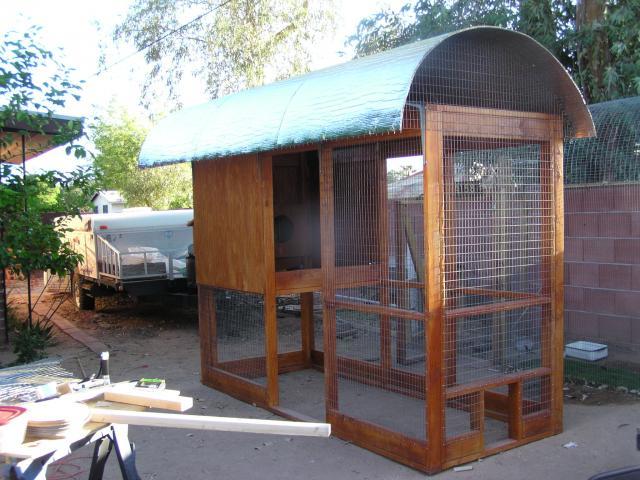I have read so many sources that now I am really confused, I need your help on how to insulate my roof before winter.
I have a large yard barn coop with a gambrel roof with shingles and two gable vents. I have already insulated the walls last year, no problems with them. This coop has bantam cochins and silkies in it. (which is why I wanted to insulate, they need a little extra help during the winter) At the time I didn't think that I needed to do the roof. I usually run a 100 watt bulb during the winter, pointed at the water to help it not freeze up. This past winter was really cold, however my water never froze over, it usually does, so I think the wall insulation helped. Here was the problem: the inside of my roof was covered in frozen condensation, it has never done that before. I don't want that happening again this winter, it's not good for the chickens and it's not good for the roof. (the walls were not wet or frosty at all, just everything that was not insulated)
I have been working on increasing my winter ventilation. I did increase the size of the two gable vents this summer, they went from 4x16" vents to the 6x16" vents. I have also just added a ridge vent and cut some eave vents on one side of the coop (the cochins roost on the other side, right at eave level, so I don't want a draft over there, so no vents on that side.) I think I should probably insulate the roof as well, would that help? If so, I am not really sure how to do that. I have left over batt insulation, so I would like to use that. Problem is, some of the things I have read on the internet showed the insulation touching the roof sheathing and another place said not to have the insulation touching the roof sheathing. What has everyone else done? I don't want my roof to rot and I don't want to cook my shingles from the inside. Thanks for your help.

I have a large yard barn coop with a gambrel roof with shingles and two gable vents. I have already insulated the walls last year, no problems with them. This coop has bantam cochins and silkies in it. (which is why I wanted to insulate, they need a little extra help during the winter) At the time I didn't think that I needed to do the roof. I usually run a 100 watt bulb during the winter, pointed at the water to help it not freeze up. This past winter was really cold, however my water never froze over, it usually does, so I think the wall insulation helped. Here was the problem: the inside of my roof was covered in frozen condensation, it has never done that before. I don't want that happening again this winter, it's not good for the chickens and it's not good for the roof. (the walls were not wet or frosty at all, just everything that was not insulated)
I have been working on increasing my winter ventilation. I did increase the size of the two gable vents this summer, they went from 4x16" vents to the 6x16" vents. I have also just added a ridge vent and cut some eave vents on one side of the coop (the cochins roost on the other side, right at eave level, so I don't want a draft over there, so no vents on that side.) I think I should probably insulate the roof as well, would that help? If so, I am not really sure how to do that. I have left over batt insulation, so I would like to use that. Problem is, some of the things I have read on the internet showed the insulation touching the roof sheathing and another place said not to have the insulation touching the roof sheathing. What has everyone else done? I don't want my roof to rot and I don't want to cook my shingles from the inside. Thanks for your help.




